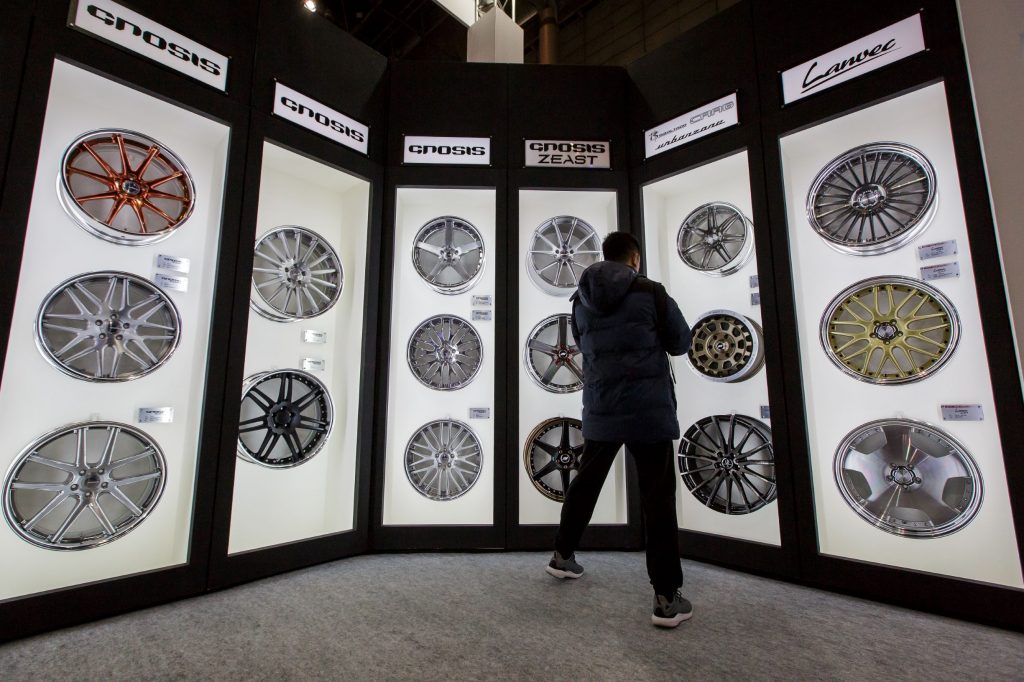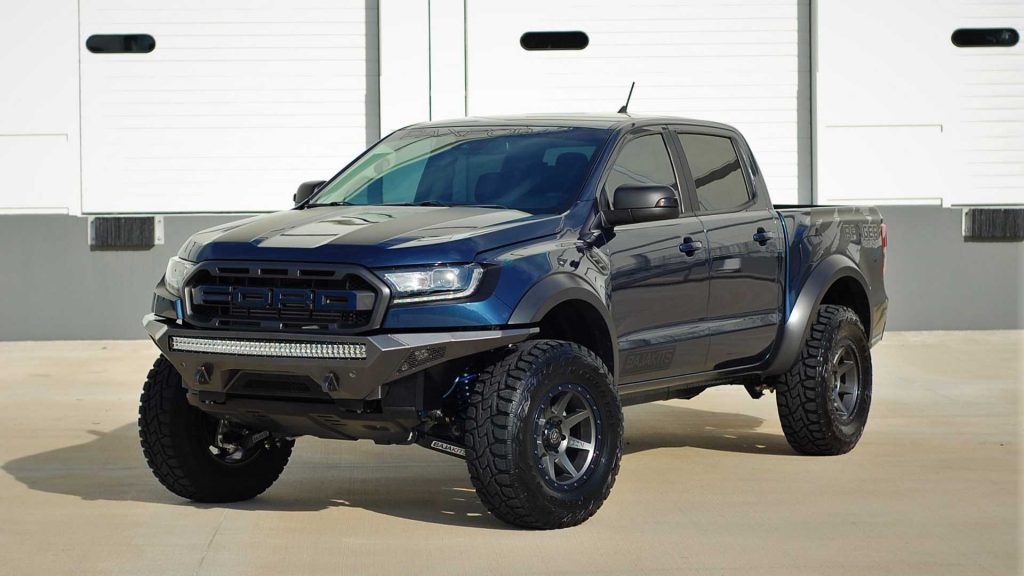Can You Change Tire Size On Car
Compared to installing turbo kits or other extensive modifications, giving your vehicle new wheels and tires seem pretty straightforward. Information technology's also a take a chance many use to fit larger wheels, and larger tires to along with them. But there's more than to swapping tire and wheel sizes than just bolting on new parts. Because if it's not done correctly, you could wind upwards with a whole host of problems.
Why y'all would desire to change your bike and tire size
Whether you're upsizing or downsizing, in that location are reasons across looks for changing your vehicle'south tire and bike sizes. For those going off-road, larger wheels add ground clearance, so your truck's or SUV'due south underbody doesn't scrape over obstacles. Simply even if y'all're not off-roading, Car and Driver explains, bigger wheels take a useful reward. Going upwards in bicycle size means you can fit larger and wider tires. Wider tires brand for more grip.

RELATED: The Flexible Wheel Is Finally Here: No More than Bent Rims
Downsizing has its benefits too, though. Smaller wheels and tires weigh less. That results in less unsprung weight at the terminate of your pause, which improves ride quality. Besides, plumbing fixtures a smaller wheel means y'all can fit a 'taller' tire, Kal Tire explains, for a comfier ride. That extra tire 'summit' likewise comes in handy during winter. A alpine and narrow tire cuts through snow better, for improved traction.
Notwithstanding, before upsizing or downsizing, it'south important to know your vehicle's original tire and wheel sizes. That'southward because changing either too much can cause more than a harsh ride.
In that location'southward more to tire and wheel fitment than the diameter
RELATED: Why You Can't Just Put Modernistic Tires on a Classic Auto
If you look on your tire's sidewall, there'due south a sequence of numbers and messages arranged in an "Xxx/YYRZZ" sequence. At that place are a few other numbers, Auto and Driver explains, but this sequence directly relates to tire size.
XXX and ZZ are pretty simple: the old is the tire width in millimeters, and the latter is the size of the cycle it fits, in inches. R means it's a mod radial tire. YY is the tire's aspect ratio, or profile, or the sidewall acme expressed equally a percent of the width. For case, a 275/40R17 tire is 275 mm (10.8") wide, fits a 17" wheel, and its sidewall is 40% of its width.

It's the aspect ratio which is arguably the most of import when it comes to fitment, Cars.com explains. While a 275/40R17 tire may fit underneath your automobile, it might not accept enough clearance to fit a 275/40R18 tire. That's why off-road vehicles have fender flares: so even at max suspension compression, the tires and wheels fit. Simply for route cars, upsizing a cycle means lowering the aspect ratio.
Irresolute your wheel size isn't whatever easier, SuperStreet explains. Firstly, you need to match the stud pattern or fit an adapter. Then, you lot need to check kickoff, or how far the hub sits from the centerline, CarsGuide explains. And if you're downsizing, y'all demand to make sure your new wheels articulate your restriction calipers and rotors.
The consequences of changing your tire and wheel sizes besides much
Any vehicle you bulldoze, information technology's designed to work with a specific range of tire and wheel sizes and aspect ratios. It's why, for case, the Honda Civic Type R doesn't have torque steer, Road & Track explains. The pause works with the wheels and tires to eliminate it.
But if you go likewise far from the original wheel size, or change the offset, the steering and handling change. That's considering you lot're messing with the suspension geometry and the tire's contact patch. If that happens, yous risk intermission damage, steering-wheel kicking-back, and accelerated tire vesture and failure, Les Schwab reports.
RELATED: What Does a Wheel Alignment Practise Exactly?
But changing your tire and wheel sizes doesn't just affect the pause. Your vehicle's speedometer, odometer, ABS, equally well as traction and stability control are calibrated to a specific size combo, Tire Rack reports. Going outside the allowed range can throw these systems out of whack. It's why, when fitting a pickup truck with larger wheels and tires, shops accept to recalibrate them. Luckily, if you are thinking of changing your bike and tire sizes, at that place are calculators to guide you, Discount Tires reports.
RELATED: Why Are Automakers Getting Rid of Spare Tires?
Also, although upsized wheels and tires have more than grip, in that location is a limit to that, Machine and Commuter reports. Past a certain size, the added width reduces the contact patch's grip. The extra weight also ruins both acceleration and fuel economic system. Plus, as nosotros discussed above, increasing your wheel size means using a tire with a thinner aspect ratio. That leaves less rubber between you lot and the potholes, giving a harsher ride and increasing the risk of blowouts.
Follow more updates from MotorBiscuit on our Facebook page.
Source: https://www.motorbiscuit.com/changing-your-tire-and-wheel-size-isnt-as-easy-as-it-looks/
Posted by: grillothiseatchat.blogspot.com


0 Response to "Can You Change Tire Size On Car"
Post a Comment